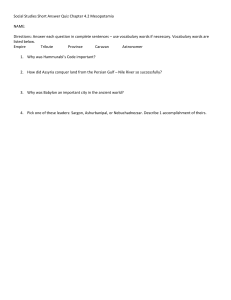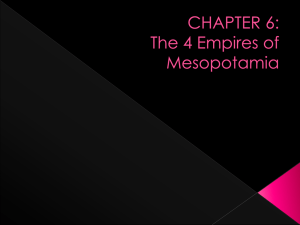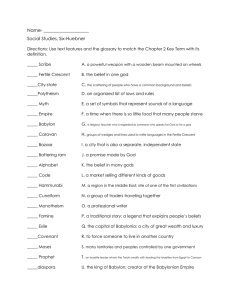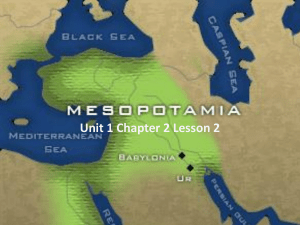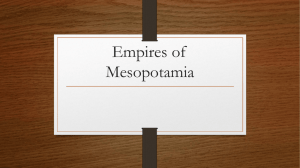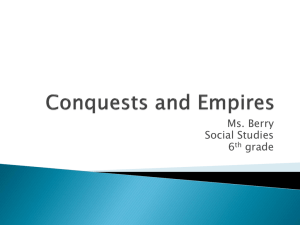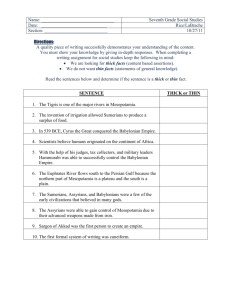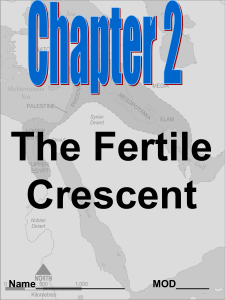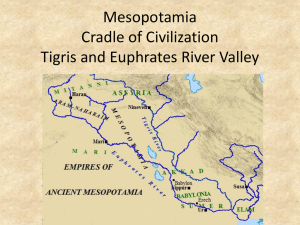The World – Chapter 2 - Morris Plains School District
advertisement
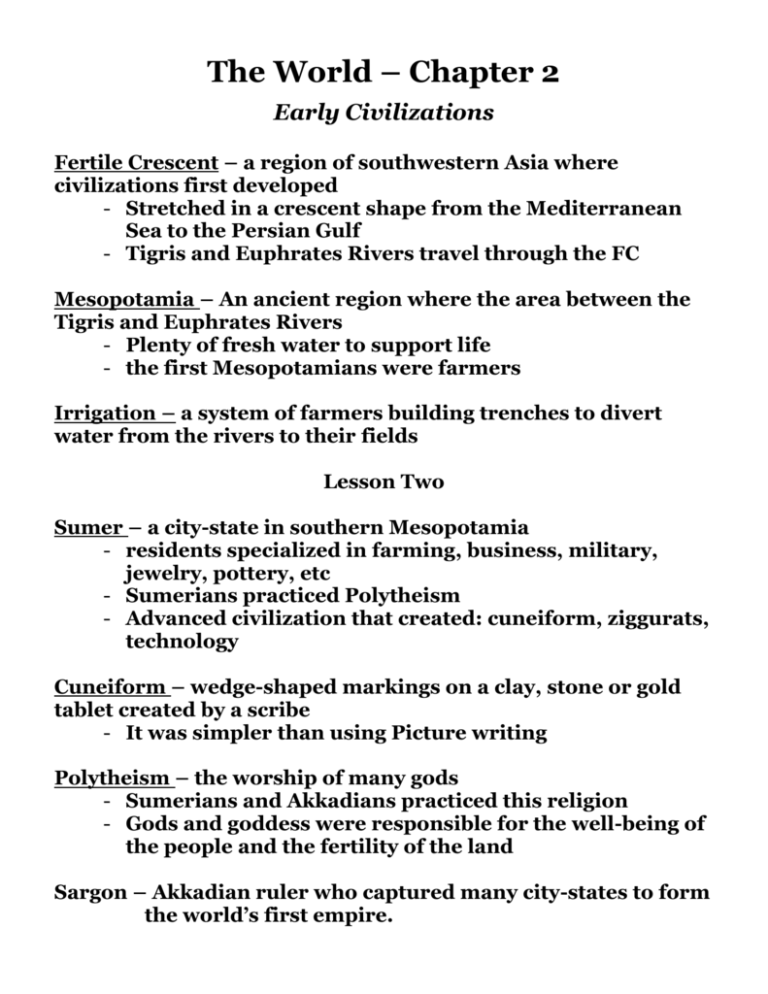
The World – Chapter 2 Early Civilizations Fertile Crescent – a region of southwestern Asia where civilizations first developed - Stretched in a crescent shape from the Mediterranean Sea to the Persian Gulf - Tigris and Euphrates Rivers travel through the FC Mesopotamia – An ancient region where the area between the Tigris and Euphrates Rivers - Plenty of fresh water to support life - the first Mesopotamians were farmers Irrigation – a system of farmers building trenches to divert water from the rivers to their fields Lesson Two Sumer – a city-state in southern Mesopotamia - residents specialized in farming, business, military, jewelry, pottery, etc - Sumerians practiced Polytheism - Advanced civilization that created: cuneiform, ziggurats, technology Cuneiform – wedge-shaped markings on a clay, stone or gold tablet created by a scribe - It was simpler than using Picture writing Polytheism – the worship of many gods - Sumerians and Akkadians practiced this religion - Gods and goddess were responsible for the well-being of the people and the fertility of the land Sargon – Akkadian ruler who captured many city-states to form the world’s first empire. Lesson Three Babylon/Babylonia – a city and empire that covered all of Mesopotamia Hammurabi – King of the city of Babylon in 1792 B.C. and controlled all of Mesopotamia. His empire was known as Babylonia His empire spread from the Persian Gulf to the Zagros Mountains Sent officials to collect taxes in all of his lands Established a set of laws called “Code of Hammurabi” Code of Hammurabi – Set of laws King Hammurabi established. - Set of 282 laws - Dealt with business practices, property, medical practices, marriage and childcare. - Overall belief that the “strong” should NOT oppress the “weak”. Protected the people Assyrians – a culture in northern Mesopotamia Expanded their territory from 1900B.C. to 600B.C. War and conquest was of higher value to them Great warriors At its peak ruled by King Ashurbanipal Ashurbanipal – King of the Assyrians from 688B.C. to 627 B. C. Personally led his armies into battles Very educated, could read and write He built a great library Nebuchadnezzar II - King of Babylon in 605 B.C. He took over much of the former Assyrian Empire Ordered massive building projects to make city “Great and Glorious” He made Babylon a important center of learning Advancements in mathematics (place value of numbers) Ex . 5, 55, 555 Advancement in astrology Lesson Four Abraham – a shepherd who lived in Ur. He is considered by Jewish people today to be the first Jew God spoke to him He made a covenant to God to worship only ONE God Founder of Judaism His followers became known as “Hebrews” Monotheism – The worship of only one GOD Israel – About 1000 B.C. became the new kingdom for the Hebrews In 722 B.C. Israel fell to the Assyrians Phoenicians – expert traders and sailors who lived along the eastern edge of the Mediterranean Sea Established trading posts all along the Mediterranean Sea Carthage (North Africa) was the richest and most important Their trading spread goods and new ideas to the rest of the world
